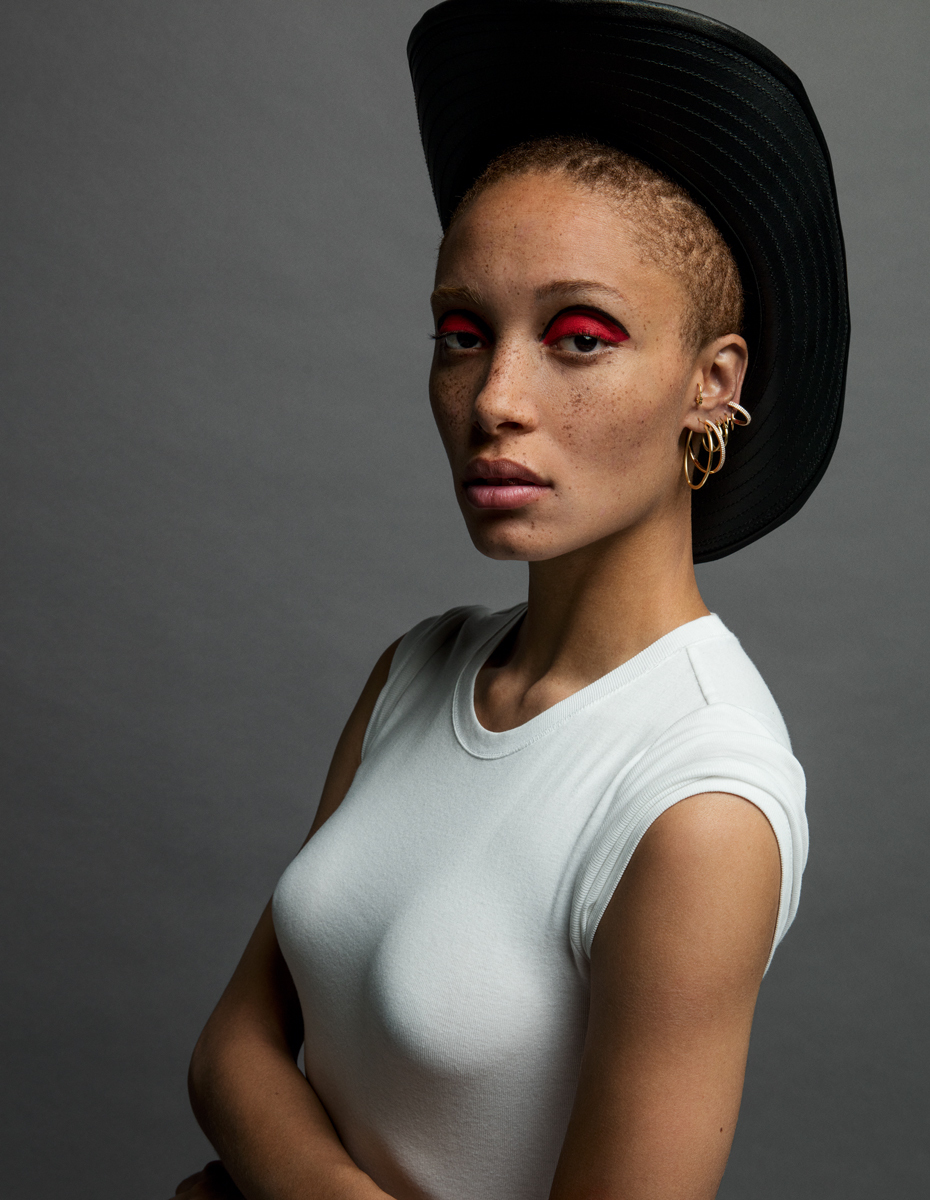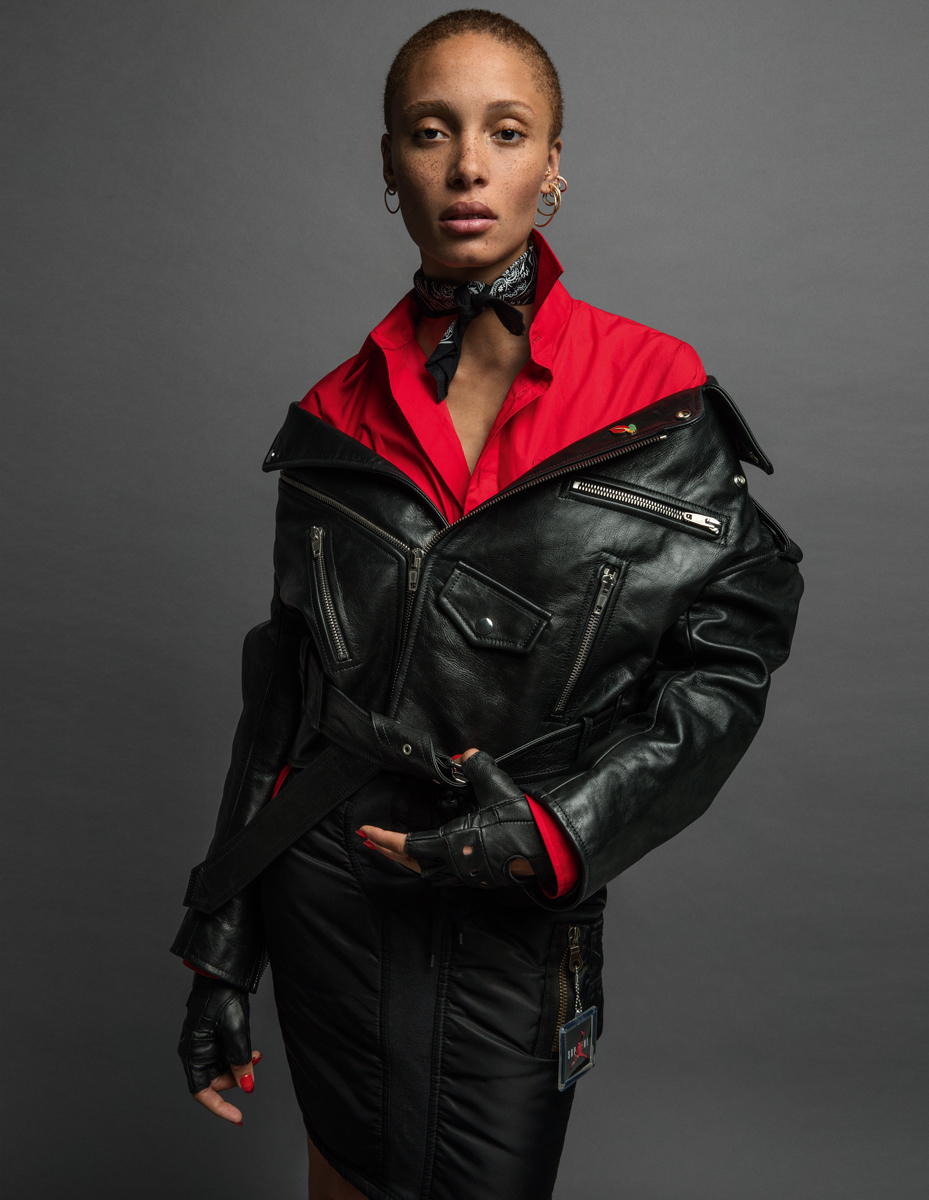
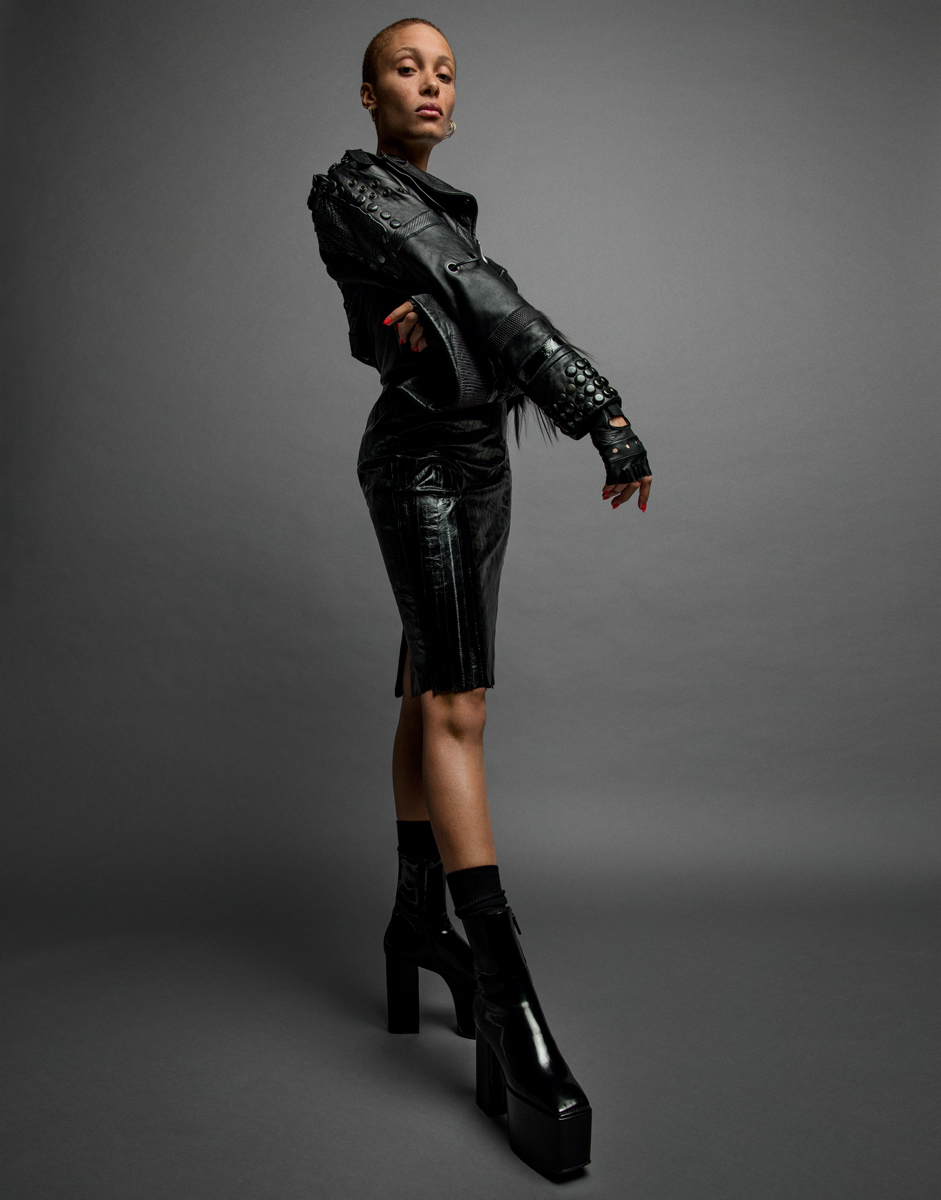

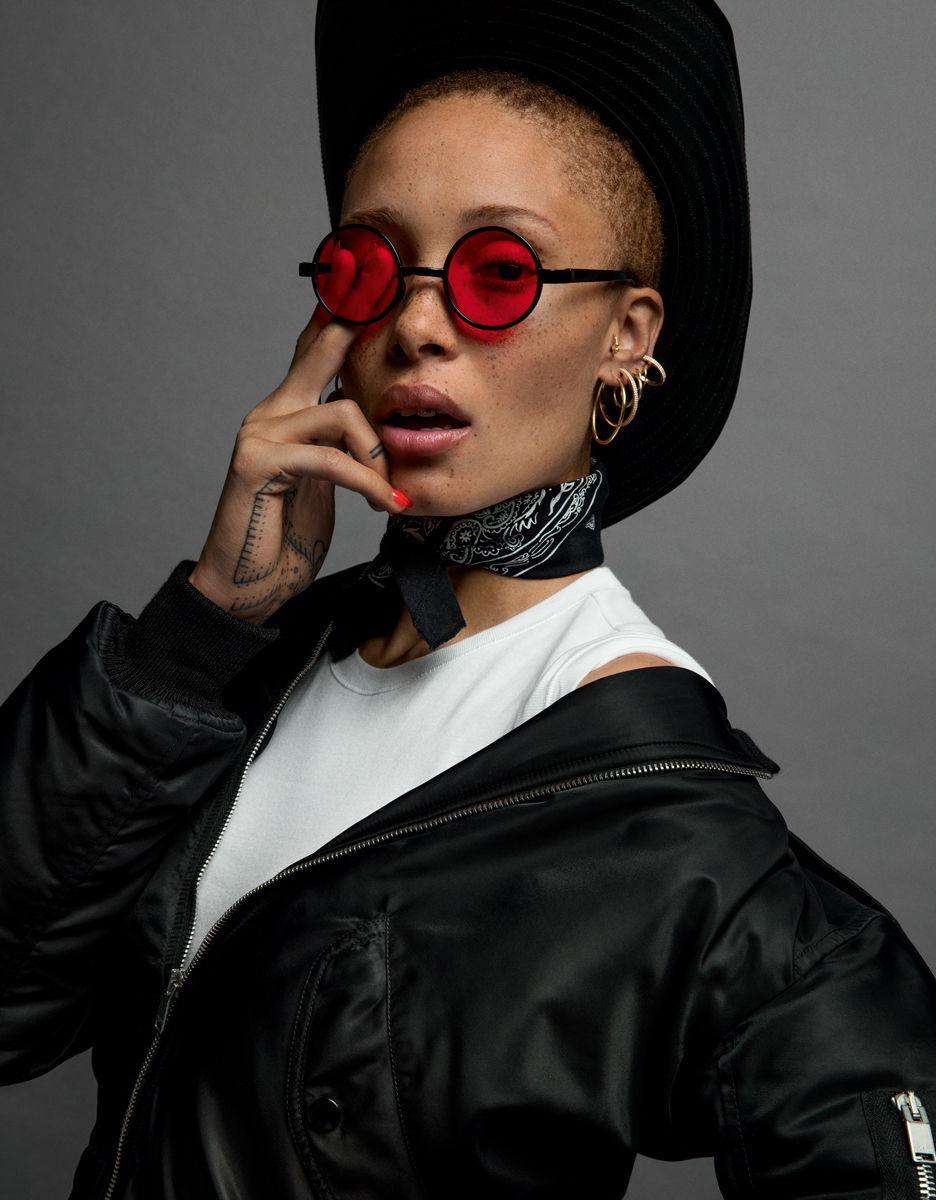
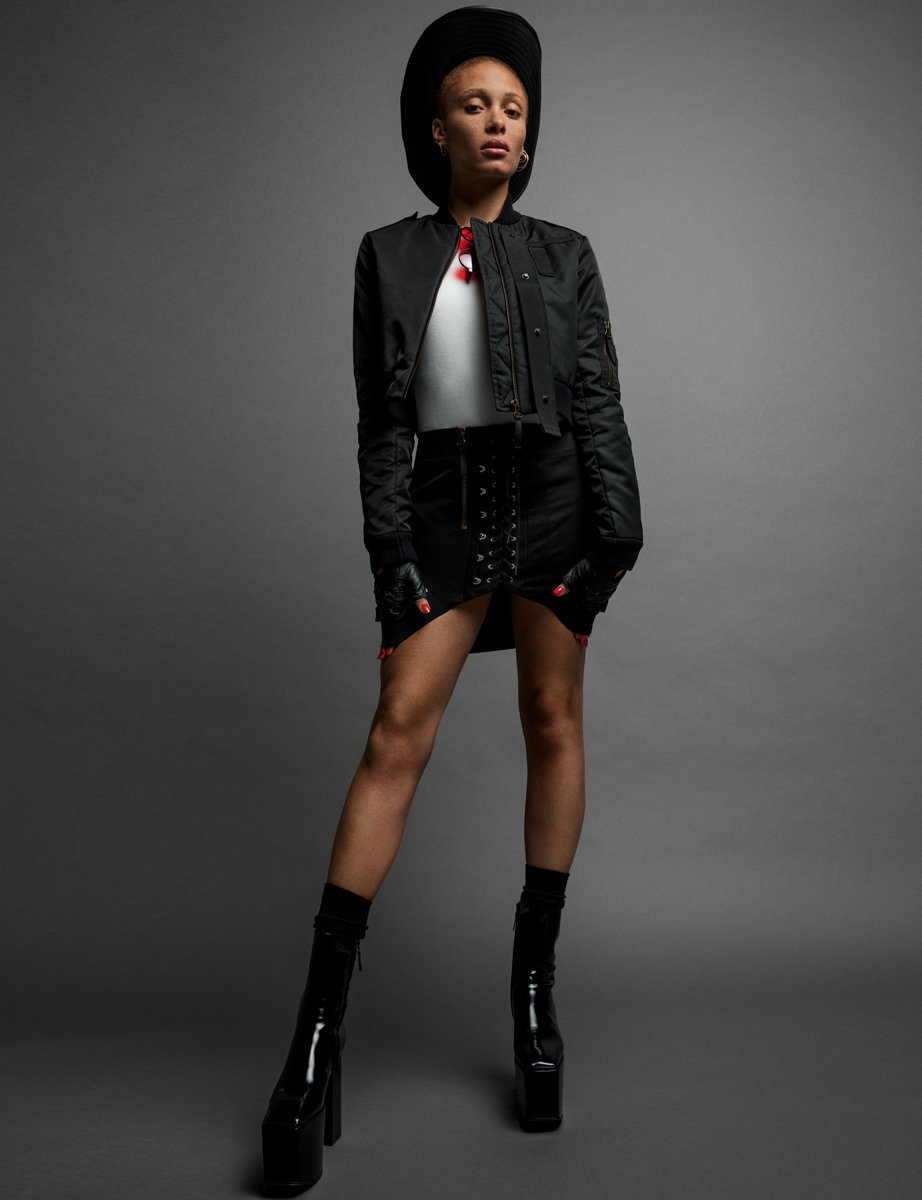
Inez Van Lamsweerde is one of fashion photography’s most pioneering spirits; the creator of a new aesthetic that combined the classic romance and glamour of the 70s with the brave new world of digital manipulation in the 90s. She subverted the easy opulence and obvious sexuality of the former decade by imbuing it with a surrealism made possible by the latter. It was a new direction for a fashion world in thrall to the realness and documentary grit of grunge and heroin chic.
Inez’s mother was a fashion journalist, so she grew up amongst the pages of Vogue, receiving her visual education from the images of Guy Bourdin and Helmut Newton, whose influence you can trace in her work. Her mother would take her to the runway shows of Paris, where she’d draw the designs she saw on the catwalks. It was this that made Inez initially want to become a fashion designer. But after enrolling in fashion school in Amsterdam, she soon switched to studying photography, and met Vinoodh (her creative partner for almost 30 years now) when he commissioned her to create the press images for his debut clothing collection.
It was love at first sight, and the pair began working together as co-authors of their photographs. Together they’ve become two of fashion’s most successful image makers; they craft campaigns and editorials for the biggest names and brightest talents, featuring the most beautiful faces.
Inez was one of the first to experiment with the computer manipulation of images, and certainly one of first to push the new technology into a bold new artistic medium. She famously airbrushed the nipples and vaginas of a series of nudes in Thank You Thighmaster, an exploration of surface, artifice, fashion, and self-improvement, exuding a neutered and awkward sexuality. Themes Inez would return to again and again.
Inez started working initially for The Face. Her series For Your Pleasure was a rebellion against fashion’s dominant, waif-like, and grungy aesthetic of the time. It was unashamedly futuristic and glamorous, but there was an uncanny element to the images — the models and backgrounds were divorced from each other, digitally manipulated — that cut across the luxury.
Shortly after, as the work began to roll in, Inez and Vinoodh moved to New York. It was in the Big Apple that they became two of fashion’s most sought after photographers. They’ve worked with just about everyone, contributing to i-D, of course, but also to Vogue, Pop, Harper’s Bazaar, Fantastic Man, Purple, and many more. Together they’ve embarked on long-term collaborations for artists like Björk and Lady Gaga, and recently Rihanna, Kanye West, and Paul McCartney’s collaborations. Fashion houses like Saint Laurent, Dior, Givenchy, Balenciaga, Yohji Yamamoto, Louis Vuitton, and Helmut Lang have all enlisted Inez’s expertise to craft visions for their brands.
In an issue dedicated to the talented women behind the lens, it made sense to turn to one of fashion’s leading female photographers to capture the spirit of our cover star Adwoa. “I will always make sure that she comes out looking smart, strong, heroic, surprising, and her most beautiful even if the image shows fragility,” Inez says, of what she brings to photography as a woman. We caught up with the photographer to find out more.
What’s your earliest fashion memory?
My mother was a fashion journalist so as a three-year-old I would go to shows with her and sit next to her, drawing like she did. I grew up with French Vogue in the house, it was my point of reference for everything. The pictures by Guy Bourdin and Helmut Newton taught me about style, poise, attitude, composition, color, strength, surrealism, and vitality.
How did you get into photography?
I started out studying fashion design but switched to photography in art school when I realized that every idea I had about fashion was image based. From my first day at art school every assignment was treated like a fashion shoot. It came so naturally to me, because of my upbringing, I had seen fashion and fashion images from the moment I could walk. In my first year at art school I started working for Vinoodh, who had just made his first collection for his label, Lawina. He asked me to create the press images.
When you first met Vinoodh did you think it would become such a long and fruitful relationship? Personally and creatively.
We fell in love right away and clicked so strongly on a creative level, each surprising the other constantly with their work. We were both romantically involved with other people at the time, but we started working together and basically never stopped. It took us about six years before we actually became a couple.
Why do you think it has been such a fertile relationship?
We are both very, very passionate — about our work, our son, and our life together.
Is there anything you miss from those early days?
We were able to spend longer on each image we made. For our editorials and campaigns we were allowed more time to develop ideas and try out different ways to shoot something, since we were working on fewer things.
How do you come up with the concepts for your images?
They fly into my brain the moment I am quiet.
What advice would you give your younger self?
The relationship with the people you love working with is the most important thing.
Who influenced you when you were starting out?
Guy Bourdin, Helmut Newton, Richard Avedon, Irving Penn, Deborah Turberville, Sarah Moon, Rainer Werner Fassbinder, Luchino Visconti, CNN, Newport cigarette ads, Pablo Picasso, Jeff Wall, Jeffrey Deitch…
What had the biggest impact on you finding your aesthetic?
The use of the computer to alter the original pictures and defy the idea of time in a photograph.
Is there one image you made, when you were starting out, that felt like everything clicked?
Yes, it’s from 1994 for The Face, two girls on bikes and a rocket taking off in the background.
What would you say defines an Inez image?
Emotional vitality and fragility, surrealism and truth, heroism and vulnerability. Basically dualism.
Do you think being a female fashion photographer has an impact on your style?
Yes, I always project myself onto the girl I am shooting, thinking, “Would I want to look like that, would I behave like that if I wore that?” There is a big trust between us as I will always make sure that she comes out looking smart, strong, heroic, surprising, and her most beautiful even if the image shows fragility.
Is it different for you, shooting men and women?
It’s all about wanting the other woman to look amazing or about the man to look attractive. My taste is very important in the image making process and I love constructing the images with the woman as the starting point and the clothes to underline the character she is portraying. Vinoodh looks at it with love and understanding for clothes but is motivated by desire too.
Fashion photography is traditionally dominated by men, why do you think this is?
It used to be seen as technical and women were not seen as technical. Then, of course, there are the gorgeous women they photograph, and the game of desire that comes with it.
Did you ever feel like being a female fashion photographer has had an adverse effect on your career?
Well, very early on people didn’t think I could do the technique or carry the heavy equipment. But then people like Annie Leibovitz and Cindy Sherman had already paved part of the way.
What advice would you give young female photographers starting out?
Study as long as you can, find your own visual language without having to be in a commercial environment.
What unique perspective do you think women can bring to fashion photography?
Personal narrative.
There has been a recent surge of younger female photographers, why do you think this is?
I think the world needs reality seen in a delicate way.
How can a younger generation of female photographers continue to push through and get their voices heard?
By making incredible work and by ignoring anyone who judges you on your looks.
What keeps you interested in image making, fashion, art, and photography in general?
The people we photograph!
How would you describe the relationship between fashion and art in your photography?
They are one and the same.
What’s been the biggest change to the industry since you started out?
Digital. In every sense of the word.
Do you like social media and Instagram as a platform or aesthetic?
I love it. I make work to communicate ideas and to inspire, now with Instagram you have a direct line to your audience, it creates independence.
What makes an image successful?
Emotion.
You’ve also branched out beyond photography, into jewelry, fragrance, what do you think you bring to these things?
We have seen so many elements of design in all these years of working with the most talented people and learned so much but we were missing a personal approach to both jewelry and fragrance and decided to bridge the gap.
What else would you like to do outside photography creatively?
We’re interested in furniture design but also in opening a restaurant or designing a hotel. We have so many ideas for living. Making movies as well!
What would you say your most iconic images are?
The photographs of Me Kissing Vinoodh.
Credits
Photography Inez Van Lamsweerde
Fashion director Alastair McKimm
Creative direction Vinoodh Matadin
Hair Ward at The Wall Group using Living Proof. Makeup Kabuki using M.A.C Cosmetics. Nail technician Michelle Saunders at Forward Artists using Essie.
Lighting director Jodokus Driessen. Studio manager Marc Kroop. Studio co-ordinator Tucker Birbilis. Photography assistance Joe Hume. Digital technician Brian Anderson. Styling assistance Lauren Davis, Sydney Rose Thomas. Makeup assistance Jenny Clemens. Production Stephanie Bargas and Eva Harte at VLM Productions, Gabe Hill and Suzy Kang at GE Projects. Model Adwoa Aboah at Tess Management and The Lions.
